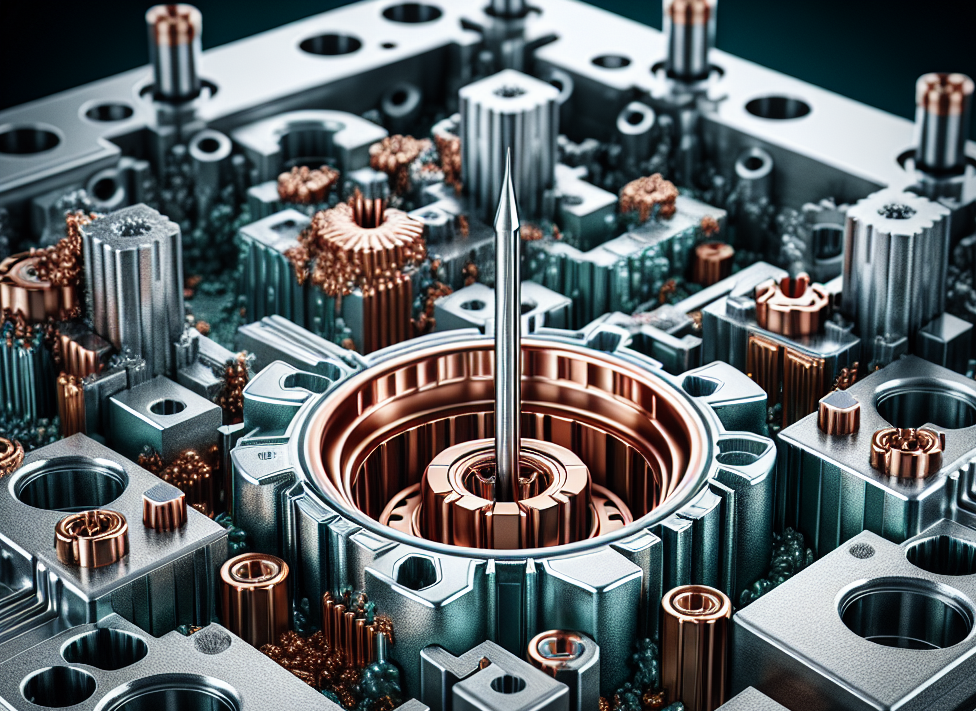BORDEM® Cr
This advanced coating technology combines the benefits of electroless nickel dispersion coatings with the outstanding properties of chromium to enhance the surfaces of copper-based mould cores. The BORDEM® Cr coating significantly increases the wear resistance of the mould cores, improves their dimensional stability over longer periods of time and facilitates the de-adhesion of the plastic parts.
BORDEM® Cr coatings are an innovative solution for mould tool construction, especially for the production of plastic parts with mould cores made of copper-based materials. This coating technology combines the benefits of electroless nickel dispersion coatings with the properties of chromium to enhance the surfaces of copper-based mould cores.
Properties
- Increased wear resistance
- Improved dimensional stability over longer periods
- Easier de-adhesion of plastic parts
- Excellent corrosion resistance
Application area
BORDEM® Cr coatings are mainly used in mould tool construction, especially in the production of plastic parts with mould cores made of copper-based materials. The coating is particularly suitable for applications where both high wear resistance and good corrosion resistance are required.
The BORDEM® Cr coating offers several significant property characteristics:
- Increased mould core life: Improved wear resistance minimises wear on mould cores, resulting in longer tool life and reduced costs.
- Improved dimensional accuracy: The coating ensures precise dimensional accuracy over longer periods of time, ensuring the quality of the parts produced and reducing scrap or reworking.
- Easier de-adhesion: The BORDEM® Cr coating facilitates the de-adhesion of the plastic parts from the mould, which increases production efficiency and improves the surface quality of the finished parts.
- Corrosion resistance: In addition to outstanding wear resistance, the coating also offers excellent corrosion resistance, making it a modern and resilient alternative to hard chrome plating.
In summary, the BORDEM® Cr coating is a specialised solution that optimises the performance and durability of mould cores in plastic injection moulding thanks to its unique properties, thus contributing to more efficient and high-quality production.
Advantages
- Increased service life of the mould cores thanks to improved wear resistance
- Minimised wear leads to longer tool life and reduced costs
- Improved dimensional accuracy over longer periods of time
- Assurance of the quality of the parts produced
- Reduced rejects and reworking effort thanks to precise dimensional accuracy
- . reworking effort thanks to precise dimensional accuracy
- Easier release of plastic parts from the mould
- Increased production efficiency thanks to easier release
- Improved surface quality of finished parts thanks to easier release
- Excellent corrosion resistance
Specifications
Applications
- Corrosion
- Friction
- Wear and tear
Physical properties
Mechanical properties
< 700 HV0.02 as coated
- Good corrosion resistance
- Salt spray test DIN 50021 <400h
- Kesternich test DIN 50018 7 cycles (SFW 2.0)
- Low coefficient of friction
- Excellent deformation behaviour with thermoplastics
Coatable materials
- Steel, stainless steel
- Nickel and nickel alloys
- Copper and copper alloys
- Aluminium and aluminium alloys
- Titanium and titanium alloys
Processing behaviour after coating
- Polishing
- Precision turning
- Precision grinding
- Pre-treatment: Microblasting optional
Industries
- Mould making
- Medical technology
- Machinery industry
- Semiconductor industry / Semiconductors
- Textile machinery industry
- Energy and electrical engineering
- Mould and tool making
- Plant and apparatus engineering
- Armaments industry
- Automotive industry
Remarks
- Hydrogen from the coating process can lead to hydrogen embrittlement. This should be avoided by the choice of materials or post-treatment at 180°C.
- Optional heat treatment at 250 - 300°C
- Partial coating possible

